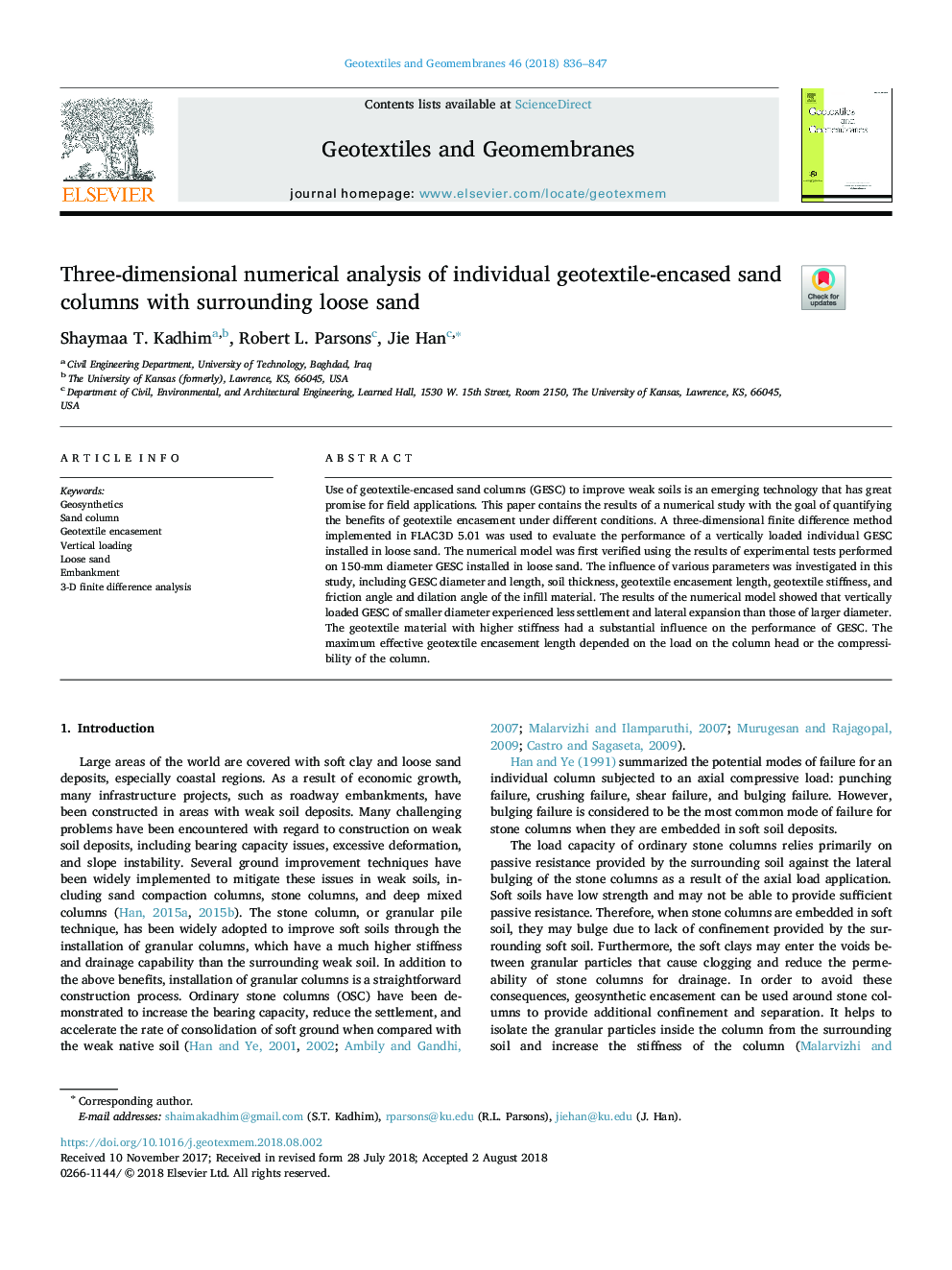| Article ID | Journal | Published Year | Pages | File Type |
|---|---|---|---|---|
| 6746805 | Geotextiles and Geomembranes | 2018 | 12 Pages |
Abstract
Use of geotextile-encased sand columns (GESC) to improve weak soils is an emerging technology that has great promise for field applications. This paper contains the results of a numerical study with the goal of quantifying the benefits of geotextile encasement under different conditions. A three-dimensional finite difference method implemented in FLAC3D 5.01 was used to evaluate the performance of a vertically loaded individual GESC installed in loose sand. The numerical model was first verified using the results of experimental tests performed on 150-mm diameter GESC installed in loose sand. The influence of various parameters was investigated in this study, including GESC diameter and length, soil thickness, geotextile encasement length, geotextile stiffness, and friction angle and dilation angle of the infill material. The results of the numerical model showed that vertically loaded GESC of smaller diameter experienced less settlement and lateral expansion than those of larger diameter. The geotextile material with higher stiffness had a substantial influence on the performance of GESC. The maximum effective geotextile encasement length depended on the load on the column head or the compressibility of the column.
Related Topics
Physical Sciences and Engineering
Earth and Planetary Sciences
Geotechnical Engineering and Engineering Geology
Authors
Shaymaa T. Kadhim, Robert L. Parsons, Jie Han,
